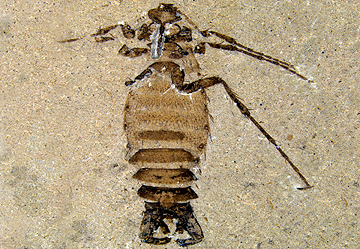Abstract
The family Corethrellidae, called frog-biting midges, with the single genus Corethrella Coquillett, 1902, is a small group of dipterans including 107 extant species (Borkent, 2017). Females of most species are haematophagous and feed on males of frogs and toads locating them by their calls (Borkent, 2008). Extant frog-biting midges have a pantropical distribution, absent in Europe, north Africa, middle and northern Asia (Giłka & Szadziewski, 2009). The genus during its phylogenetic history dated back to Lower Cretaceous (125–129 Ma) had a broader geographical distribution, and during Eocene was present in Europe. Till now nine fossil species have been described from Lower Cretaceous Lebanese amber (1), mid-Cretaceous Burmese amber (1), Eocene Baltic amber (5) and Miocene Dominican amber (2) (a complete annotated list is provided below).
References
Baranov, V.A., Kvifte, G.M. & Perkovsky E.E. (2016) Two new species of fossil Corethrella Coquillett from late Eocene Rovno amber, with a species-level phylogeny for the family based on morphological traits (Diptera: Corethrellidae). Systematic Entomology, 41, 531–540.
https://doi.org/10.1111/syen.12172
Borkent, A. (2008) The frog-biting midges of the World (Corethrellidae: Diptera). Zootaxa, 1804, 1–456.
Borkent, A. (2017) Corethrellidae (frog-biting midges). In: Kirk-Spriggs, A.H. & Sinclair, B.J. (eds). Manual of Afrotropical Diptera, Vol. 2. Nematocerous Diptera and lower Brachycera. Suricata 5. South African National Biodiversity Institute, Pretoria, pp. 665–670.
Borkent, A. & Szadziewski, R. (1992) The first records of fossil Corethrellidae (Diptera). Entomologica Scandinavica, 22, 457–463.
https://doi.org/10.1163/187631291X00255
Coquillett, D.W. (1902) New forms of Culicidae from North America. Journal of the New York Entomological Society, 10, 191–194.
Cranston, P.S. (1980) Insects of Saudi Arabia. Diptera: Fam. Chaoboridae. Fauna of Saudi Arabia, 2, 286–290.
Edwards, F.W. (1932) Diptera family Culicidae. Genera Insectorum 194, 1–258.
Giłka, W. & Szadziewski, R. (2009) Order Diptera, family Corethrellidae. Arthropod fauna of the UAE, 2, 661–666.
Poinar, G.O. & Szadziewski, R. (2007) Corethrella andersoni (Diptera: Corethrellidae), a new species from Lower Cretaceous Burmese amber. Proceedings of the Entomological Society of Washington, 109, 155–159.
Shi, G., Grimaldi, D.A., Harlow, G.E.,Wang, J., Wang, J., Yang, M., Lei, W., Li, Q. & Li, X. (2012) Age constraint on Burmese amber based on U–Pb dating of zircons. Cretaceous Research, 37, 155–163.
https://doi.org/10.1016/j.cretres.2012.03.014
Szadziewski, R. (1995) The oldest fossil Corethrellidae (Diptera) from Lower Cretaceous Lebanese amber. Acta Zoologica Cracoviensia, 38, 177–181.
Szadziewski, R., Krzemiński, W. & Kutscher, M. (1994) A new species of Corethrella (Diptera, Corethrellidae) from Miocene Saxonian amber. Acta Zoologica Cracoviensia, 37, 87–90.

